This is a guest post about Tenerife by Sam Whiteside, Port Presenter with P&O Cruises. You can find out more about Sam at the end of this article.
As the largest, most populous and most visited Canary Island, Tenerife is the ultimate holiday destination. If you want beaches, it has them. If you want scenery, it has it. If you want activities, you can find them all. And if you want food, there is plenty to keep your taste buds excited. Around 5 million tourists visit the island every year, making it one of the most important tourist destinations in Spain. It is the economic and cultural heart of the Canary Islands, with several UNESCO World Heritage sites including Teide National Park. The latter is the highest mountain in all of Spain, and is the third largest volcano in the world.

With two airports serving both the south and the north of the island, it is an easy location to get to. For those visiting on a cruise ship, the port of Santa Cruz de Tenerife is the main gateway and is the capital of the Canary Islands, a title shared with Las Palmas on Gran Canaria. It includes the city of La Laguna, which was the first capital of the island before Santa Cruz replaced it.

When docking in Santa Cruz, I would advise first time visitors to head away from the city and explore some element of the island. For example, it is a great destination for families due to the number of attractions it has. These include the world’s best water park (according to TripAdvisor), Siam Park in Los Cristianos, and also the famed parrot and animal park Loro Parque in Puerto de La Cruz.
Santa Cruz de Tenerife
Home to approximately 200,000 people, Santa Cruz is the commercial heart of the island and the seat of the island council. The heart of the city spreads out from the Plaza Espana which is the first place you come to from the port area. It is where the island council building is located and you will find the main shopping streets, tapas bars and cafés branching off in all directions.
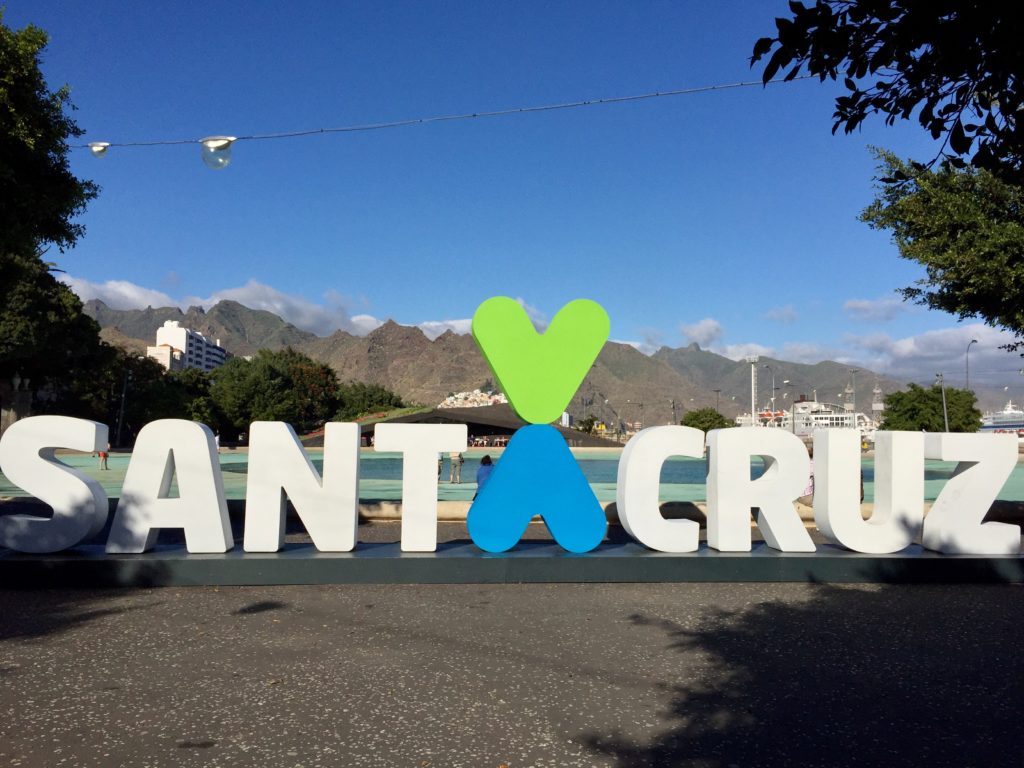
If you take a stroll from Plaza Espana you will discover the Auditorio de Tenerife, possibly the most photographed location in the city. Designed by famed futurist architect Santiago Calatrava, this cultural centre is located next to the sea and was opened in 2003. The majestic profile of the auditorium has become an architectural symbol of the city. It is also regarded as the finest modern building in the Canary Islands and is one of the most emblematic buildings of Spanish architecture. From the port of Santa Cruz it is approximately a 20-minute walk along the new pedestrianised zone next to the harbour of Santa Cruz. This is easily reached by following the painted blue line on the pavement from the cruise area.
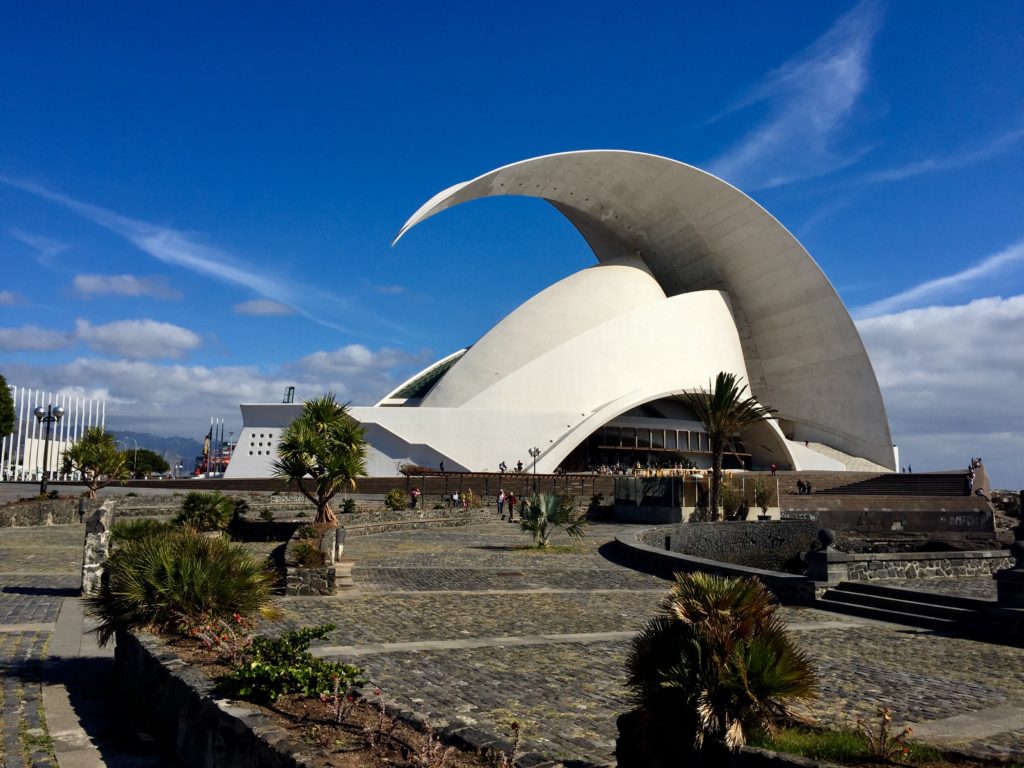
Next to the Auditorio, you will find the only landscaped mountain garden in the city, the Palmetum. Opened in 2014, the Palmetum is a twelve-hectare botanical garden specialising in palm trees. It is a unique project as it transformed a former rubbish tip into an area for leisure and arboreal culture. The garden houses the best collection of global palm trees in Europe, set amongst streams, lakes and waterfalls. It overlooks the sea, providing the best vantage point to view the city and the Auditorio from up high. It is also an accessible garden with ramps and slopes, and an elevator to access the various areas. The Palmetum is open daily from 10AM to 6PM, priced at €6 per person.
For those people that like to shop, you have a very large El Corte Ingles located next to the main bus station of Santa Cruz. Behind El Corte Ingles, you will also find the Centro Commercio Meridiano, a large shopping mall with names such as Zara, H&M, Primark and C&A, plus a multiplex cinema and large food terrace. It is open from 10AM to 10PM daily, including Sundays, except for the large Carrefour hypermarket, which is only open Monday to Saturday.
San Cristobal de La Laguna
On the outskirts of Santa Cruz you will find San Cristobal de La Laguna, considered to be the cultural capital of the Canary Islands. Originally the site of one of the nine Gunache kingdoms of Tenerife, the city was founded between 1496 and 1497 by Alonso Fernández de Lugo and was the capital of the island after the conclusion of the conquest of the islands. Later the city would also become the capital of the Canary Islands. The layout of the city, its streets and its environment have elements shared with colonial cities in the Americas, since the urban plan of the city was the model for several Latin American cities.

The city was declared a UNESCO World Heritage Site in December 1999 and has often been referred to as the ‘Florence of the Canary Islands,’ due to its large number of churches and convents, plus its old town with its collection of colonial buildings. At the heart of the city, the Cathedral of San Cristóbal de La Laguna is the most prominent building, completed in 1915. Inside the cathedral are the remains of Alonso Fernández de Lugo, founder of the city and conqueror of the island.
The best and most cost effective way of reaching La Laguna is by taking the Tenerife Tram from the Santa Cruz bus station. The journey takes approximately 30 minutes to the La Trinidad Station in La Laguna, with a tram every 5-6 minutes. It costs €1.35 per journey which is payable via the ticket machines at all stations. Once at La Trinidad Station it is a 5 minute walk to the centre of the historic town and the main pedestrianised streets with all their colonial charm.
Mount Teide National Park
Mount Teide National Park has to be the first place you visit, if you have never been to the island before. It is the most visited National Park in all of Europe and the 8th most visited in the world, with approximately 3 million annual visitors. It is also one of the 12 Treasures of Spain (elected in 2007 by public votes), and has been a UNESCO World Heritage Site since 2007. The National Park covers an area of 18,990 hectares, with Mount Teide standing at 3,135 metres above sea level. The volcano and its surroundings, including the whole of the Las Cañadas caldera, are protected.

Access is by a public road running from northeast to southwest across the caldera. TITSA, which is the island’s bus service, runs a return service to Teide once a day from both Puerto de La Cruz and Playa de Las Americas (348 and 342 respectively). The park has a parador (hotel) and a small chapel. A cable car goes from the roadside at 2,356 metres (7,730 ft) most of the way to the summit, reaching 3,555 metres (11,663 ft), carrying up to 38 passengers (34 in a high wind) and taking eight minutes to reach the summit. Queues can exceed two hours in peak season. The cable car operates from 9AM-4PM daily, with the last ascent at 4PM, and the last descent at 4:50PM.

The price of a return ticket is €27 per adult and €13.50 per child. Once at the top station, access to the summit itself is restricted; a free permit is required to climb the last 200 metres (660 ft). Numbers are normally restricted to 200 per day. It is worth noting that snow can remain on the summit of Teide into the summer months, so it is always advisable to take warm clothing.
Playa de Las Americas
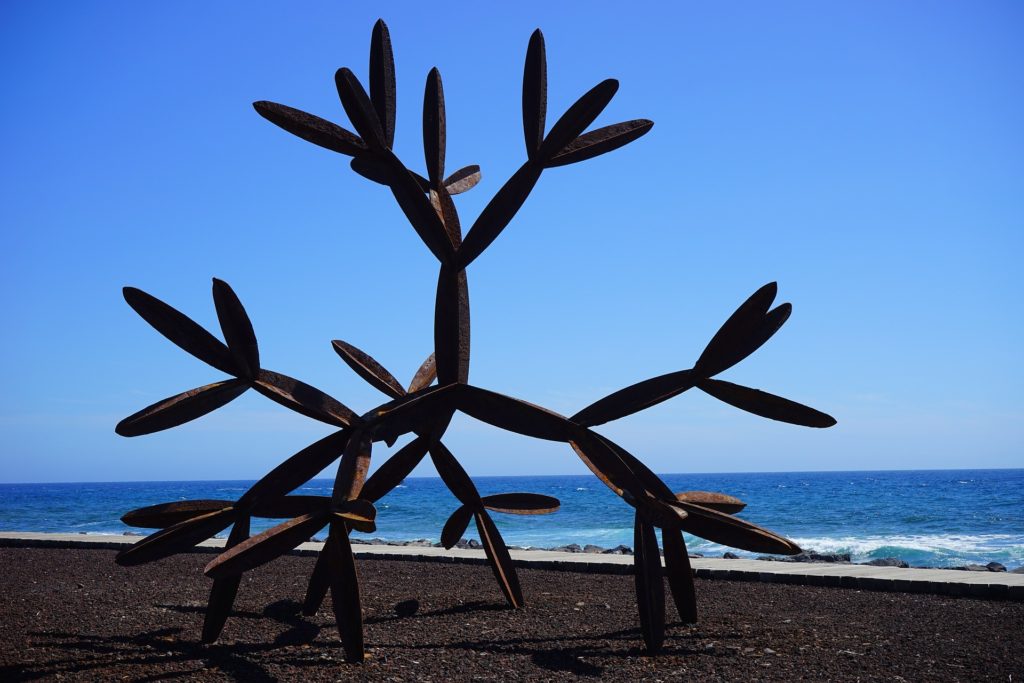
Away from the natural beauty of the island, located in the south west, the three touristic resorts of Playa de Las Americas, Los Critianos and Costa Adeje boast some of the best beaches, weather and attractions that Tenerife has to offer. Playa de Las Americas is the purpose built holiday resort and main centre of the island’s nightlife. It features bars, clubs, restaurants and beaches. Most of the beaches here are manmade, with imported sand from Africa. At the heart of Playa de Las Americas, you will find the Central Park of Arona, a 42,000 square metre park displaying the native flora of the Canary Islands. A third of the area is covered with over 40 species of palm trees, and the pathways are lined with macadamia and tamarind trees.
Los Cristianos
Predating the tourist boom of the 1970s and 1980s, neighbouring Los Cristianos used to be a humble fishing village. Since the 1950s, when the town played host to Swedish tourists looking to ease any ailments with the warm climate and clean air, tourists have continued to flock here. With the opening of the Tenerife South Airport in 1978, a growing number of hotels and resorts meant the town expanded rapidly and also started to accommodate a large influx of British expatriates escaping the cold British weather either permanently or semi-permanently.
Aside from the great weather they were attracted to the great beaches here, of which the town has two. The main beach is Playa de Los Cristianos, a sandy beach sheltered by the harbour boasting a number of facilities including watersports. Las Vistas Beach is located in the adjacent bay beyond the harbour and is manmade, protected by breakwaters. These all back onto the town, which has plenty of bars, restaurants and other nightlife, creating a bustling holiday atmosphere. It is from here that you can also connect to the neighbouring islands of La Palma, La Gomera and El Hierro via ferries from the harbour.
Costa Adeje
Finally Costa Adeje is an upmarket resort that rounds out the heart of the southern tourist area. There is a lovely area of beaches along the coast line and these are some of the best on the island. They include Playa del Duque and Playa Fanabe which offer golden sands and wonderful swimming conditions.

The main highlight of Costa Adeje has to be the water kingdom of Siam Park. Opened by Her Royal Highness the Princess of Thailand Maha Chakri Sirindhorn in 2007, the water park has a Thai theme to all of its attractions including rides, park buildings and restaurants. It has the largest collection of Thai themed buildings outside of Thailand. The park was voted the TripAdvisor Travellers’ Choice Winner of ‘World’s Best Waterpark’ in 2015 and holds 7 world records. This includes an record for the largest man made wave in the world in ‘The Wave Palace,’ which can generate waves of 3.3 metres (11ft). It also has its own surfing school. Interestingly, it is the world’s first green waterpark, and has its own desalination plant on site to turn seawater into fresh water for the rides, plus the water is recycled at the end of each day through the watering of the parks plants. The park is open all year round from 10AM, priced at €34 per adult and €23 for children.
Puerto de La Cruz
In the opposite direction to the resorts of the south coast, the city of Puerto de La Cruz on Tenerife’s northern coast is the oldest tourist resort in the Canary Islands. From the moment the island was conquered by the Spanish in the 15th Century, the export economy developed around the Orotava Valley and its large agricultural production of bananas and other crops, meant a lot of commercial and passenger movement which quickly inspired foreign visitors to stay for the beneficial qualities of the climate. Before the advent of mass tourism in the late 20th Century, early tourism catered for Europe’s elite including Agatha Christie, who based her Mysterious Life of Mr. Quinn in the town. This illustrious reputation gave it an advantage over other tourist sites when it came to the development of modern tourism in the 1950s, and the construction of the first modern hotels like the Grand Hotel Taoro.
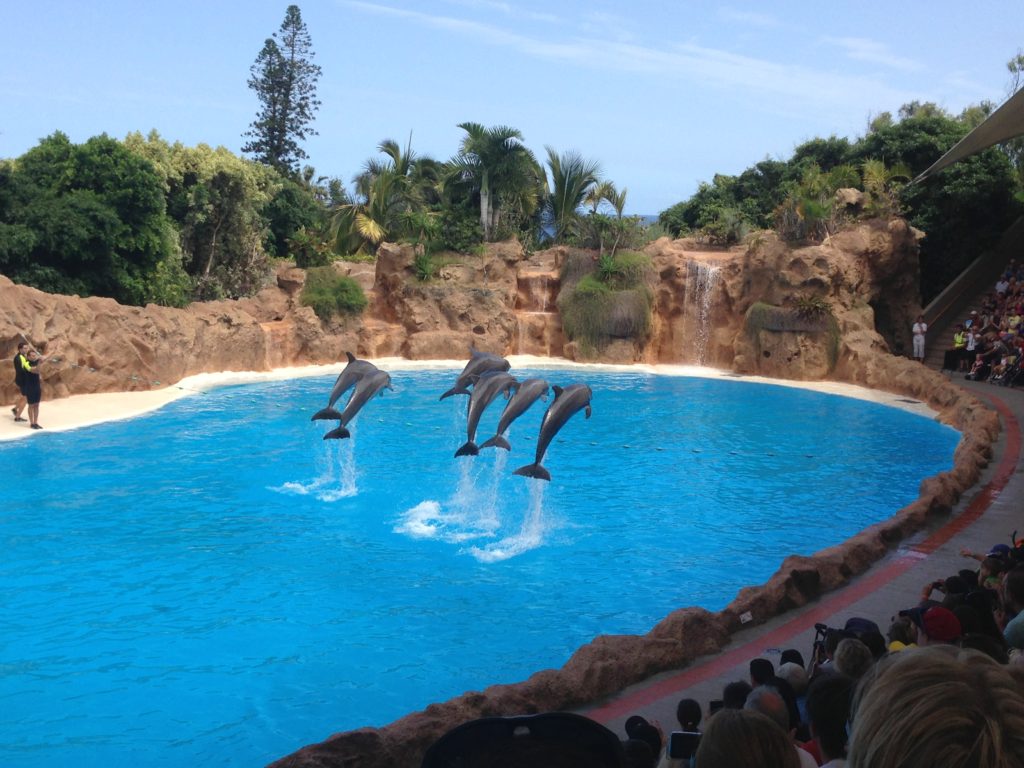
Tourism today is the most important part of the economy of Puerto de La Cruz. Being just a 30 minute drive from Santa Cruz, it is an easy day trip option for people travelling on a cruise, and it has lots of attractions to suit all ages. The most popular of these is Loro Parque, Europe’s number one zoo. Originally conceived as a parrot park in 1972, the park now houses some 4000 parrots (the largest collection in the world) on 33 acres of land. It also has the largest dolphin show pool in Europe, the world’s largest indoor penguin exhibit, the longest shark tunnel in Europe and it is only the second location in Europe to house orcas. Aside from these animals, the park also has sea lions, gorillas, tigers, iguanas, alligators, as well as a large orchid garden and the largest Thai village outside of Thailand. The park is open daily from 8:30AM to 6:45PM and is priced at €34 per adult and €23 for children.
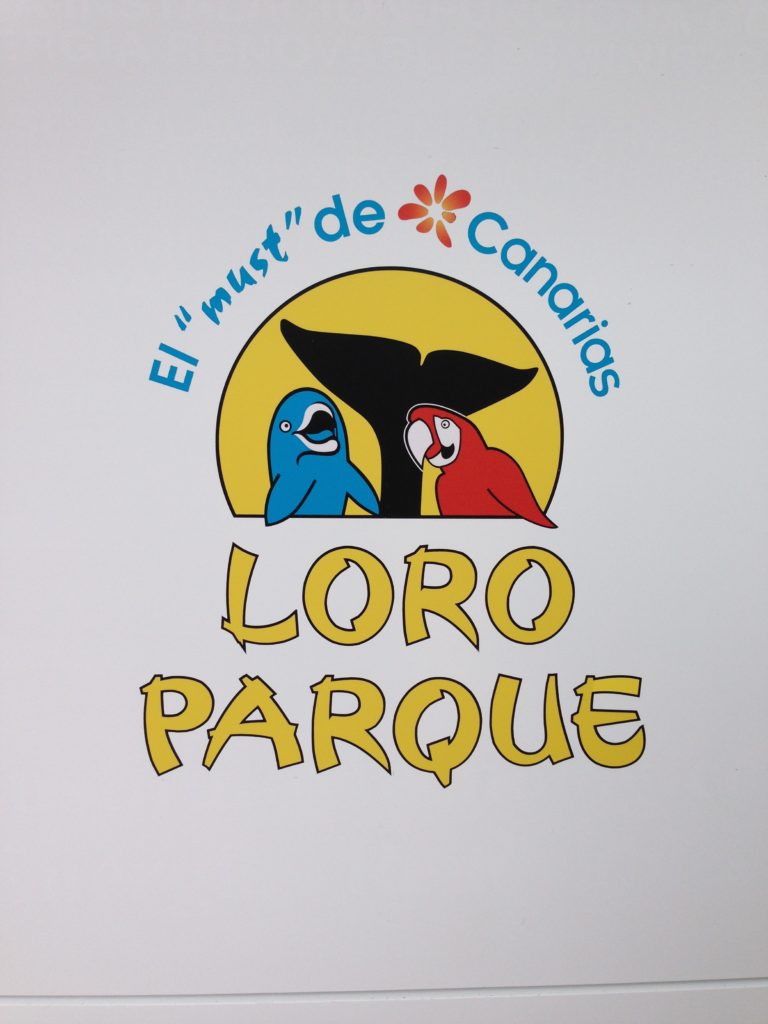
In downtown Puerto de La Cruz, you have a more laid back approach to tourism compared to the bright lights and package holiday feel of the south of the island. This is why Puerto de La Cruz tends to be the holiday destination of choice for more mature Western European couples.
The new San Telmo Promenade along the waterfront of the town is a great asset and opens up the area, making it an inviting place to take a stroll. You may want to spend some time bathing at the famous Lago Martinez. The pride of Puerto de La Cruz, it is one of the most widely admired examples of coastal transformation anywhere. A prestigious team of experts, led by the famous artist from Lanzarote Cesar Manrique, carried out this work that blends in perfectly with traditional Canary Island architecture with native plants and original sculptures. In the pool of the island there is a geyser, designed so visitors can see how the trade winds act on the water. As it happens, the geyser is a well of cultural interest. Near this geyser, Manrique, unable to represent a volcano with fire, created one overflowing with water, in what is known as the crater. It is a mixture of volcanological conceptualizations contrasted with the sea. There is a wide range of bars, restaurants, stalls and a casino giving the complex a very special vitality, making it one of the most striking attractions on the whole island. The basic entrance fee is €5.50 for adults and €2.50 for children up to 10, open from 10AM to 5PM from Monday to Sunday.
Finally, if you are a lover of gardens, then Puerto de La Cruz is a fantastic location to discover different varieties of floral arrangements. The oldest gardens in the town, and the second oldest in all of Spain, are those of the Jardin Botanico, officially the La Oratava Acclimatisation Gardens. They were founded by the royal decree of King Charles III of Spain in 1788, as an acclimatisation garden for plants from South America and the Tropics that he wanted to adorn his palatial gardens in Madrid. It has major collections of tropical and sub-tropical plants, including several varieties of palms, orchids, succulents, fig trees and a giant ficus tree. For such a small garden, the collection is very extensive.

There is also the Orchid Gardens of the Sitio Litre, the oldest surviving garden in Tenerife. It is now 235 years old and has been owned by a British family since 1774. Marianne North, the well known botanical painter, lived in the house in the gardens for two months in 1875. All of her 832 paintings are housed in the Royal Botanical Gardens in Kew. Agatha Christie also stayed at the house in 1927 and based the plot of The Mysterious Mr. Quinn in Puerto de La Cruz. Aside from its orchid collection, the gardens also have the oldest Dragon Tree in Puerto de La Cruz. The gardens are open every day from 9:30AM to 5PM, priced at €4.50 per person.
So, I hope this shows you that the largest island of the Canary archipelago has so much to offer. There is plenty to explore and uncover across its diverse landscape and vibrant touristic centres.
About Sam
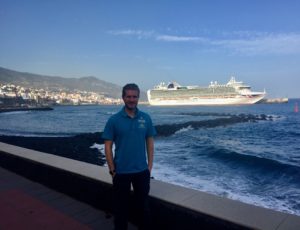 Sam Whiteside grew up by the seaside in Lowestoft, Suffolk but ended up working at sea by chance after a discussion at university with a professor. Having spent his entire ship career in the Shore Excursions department, Sam is currently a Port Presenter with P&O Cruises where he has been for 5 years. He has worked on all the ships in the current fleet.
Sam Whiteside grew up by the seaside in Lowestoft, Suffolk but ended up working at sea by chance after a discussion at university with a professor. Having spent his entire ship career in the Shore Excursions department, Sam is currently a Port Presenter with P&O Cruises where he has been for 5 years. He has worked on all the ships in the current fleet.
Sam loves getting out and exploring all the destinations that he visits on cruises and is always excited to try new things and expand his knowledge of the ports. He has recently invested in a new passion of amateur photography, which is great in his job because he has the perfect material to work with on a daily basis. Sam doesn’t have a favourite destination. He finds they all have something special about them, but destinations he enjoys visiting regularly include the Baltic and the Central Mediterranean.
You can follow Sam’s travels on Instagram at iamsailorsam.
Follow me on social media


